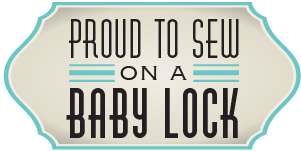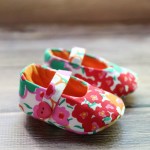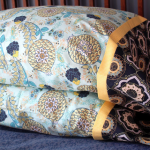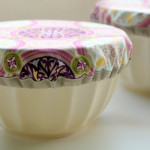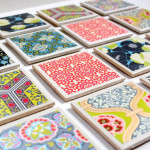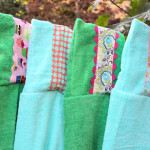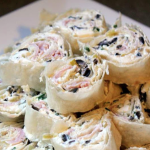So now that we’ve got our top or dress completed, it’s time to add the fun, accent flower. This part of the pattern is completely optional, but I think it adds a nice little bit of whimsy to the outfit. You can get as creative as you would like with this accessory, but I opted to follow the pattern and just add an extra-large fabric covered button to the center.
You’ve got to start by cutting 8 petals. I used the accent fabric for the petals, but you could use whatever fabric you like……maybe even something less matchy and more bold…..it’s up to you.
Fold your petals in half, wrong sides together, and stitch down one side. I clipped some of the bulk off the very tip, so that they would be easier to turn right side out.
After you’ve sewn all eight petals, turn them right side out. Try using a sharper point (like a point-turner) to really get the corners nicely turned. Press with seams down the middle according to pattern instructions.
For the next step, I ran a gathering stitch across four petals at a time. I then pulled the bobbin thread to gather the petals. Once I had them gathered tight enough, I tied the ends of the threads together to hold them in place. I also opted not to top-stitch each petal just because I prefer this look.
Place four of your petals on top of the other four petals in an alternating position. Then run a stitch around in a circle to hold them in place.
Here is my flower before the addition of the button. Choose your button and add it to the center of the flower. I stitched the button onto the flower at the same time I sewed it to my top.
And there you have it – a fun, flower accessory. I love the idea of adding this flower to a headband or even adding a pin on the back. I think it would be really fun to make one of these for myself to pin to my purse or cardigan when Savannah’s wearing this outfit. A little bit of “mommy and me” never hurt anyone, right?
Tomorrow is day 5 of our sew along where we will be working on the capris/shorts. If you’ve reached your final destination of the sew along and were just doing the dress, don’t forget to add pictures of your completed sew along look to The Cottage Home Flickr Pool if you want to be considered for the contest and $50.00 gift certificate. And for the rest of you, see you tomorrow!

























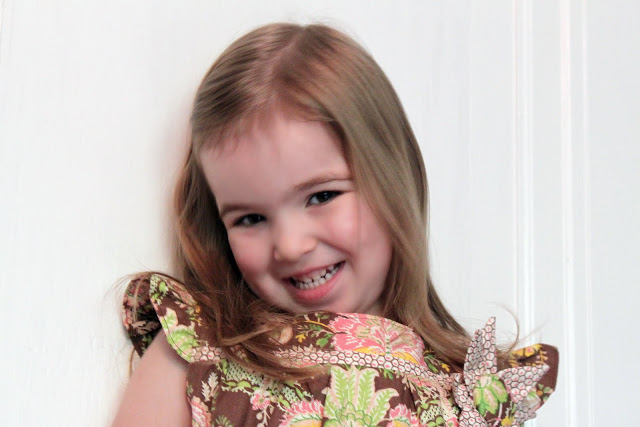






















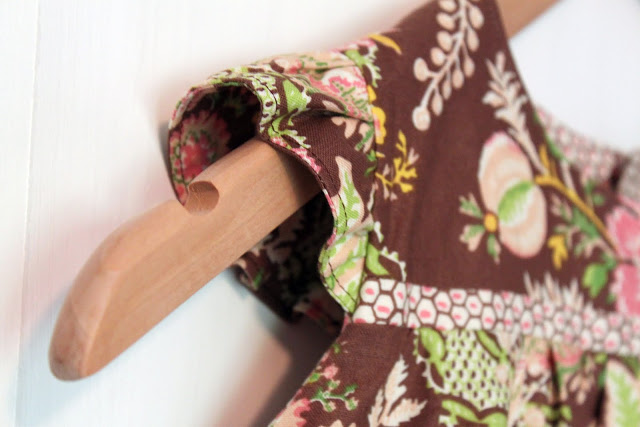

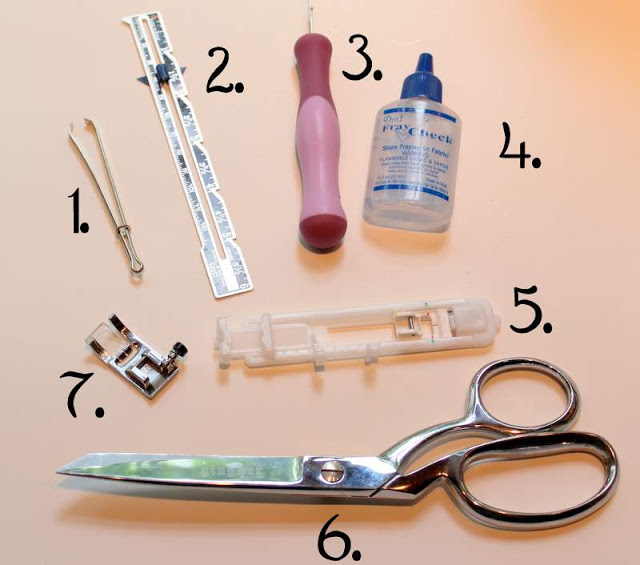
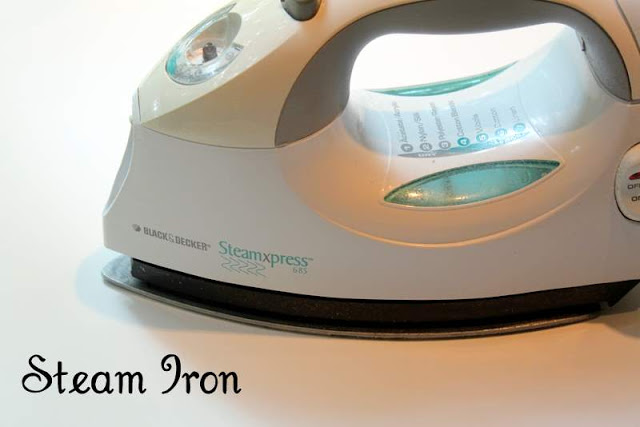
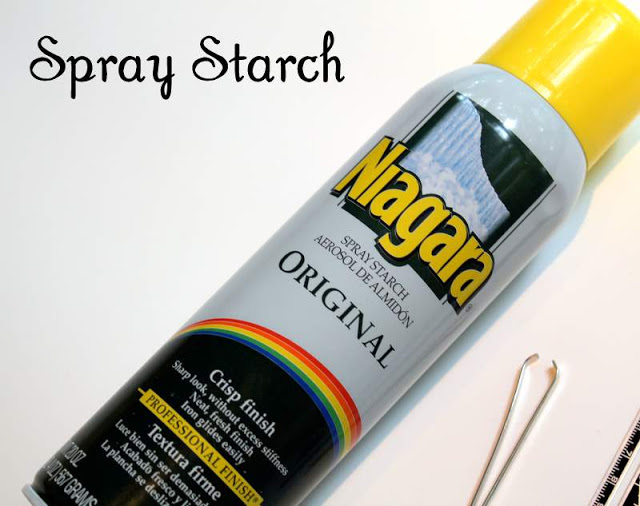




















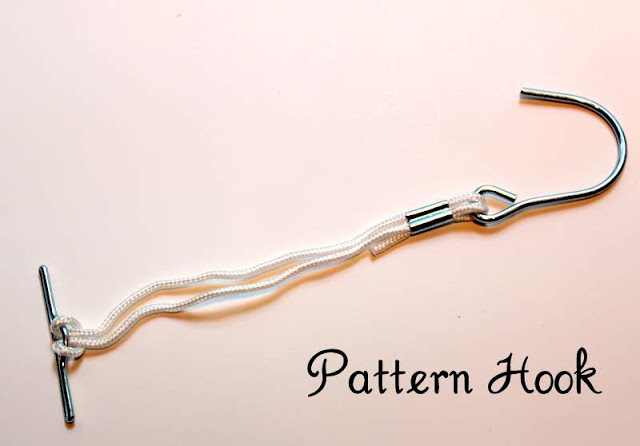

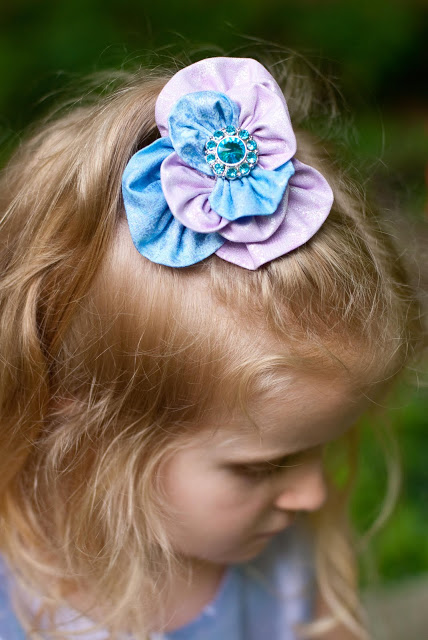
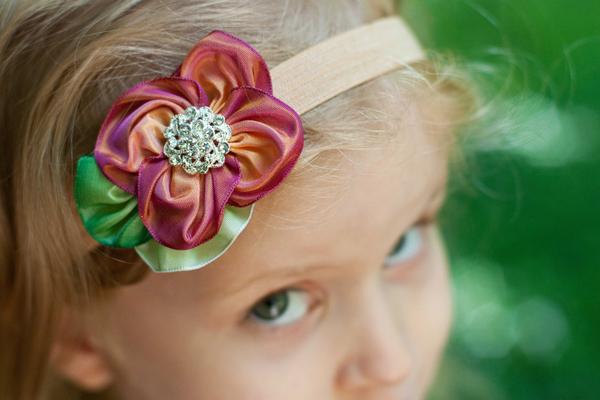
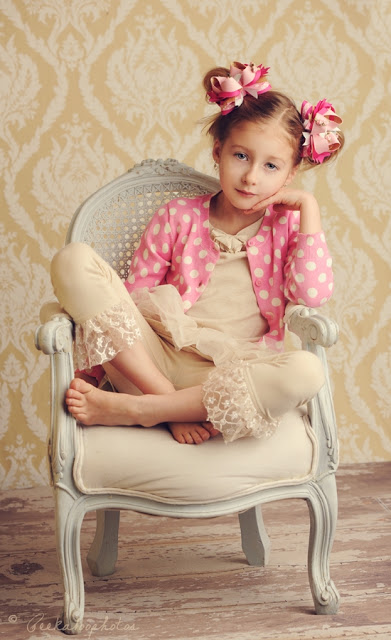
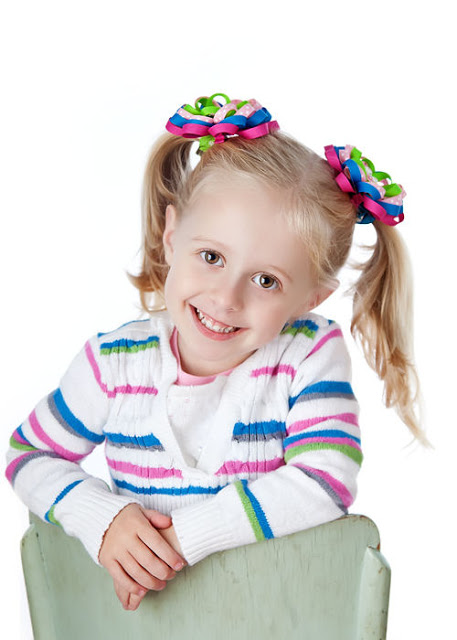








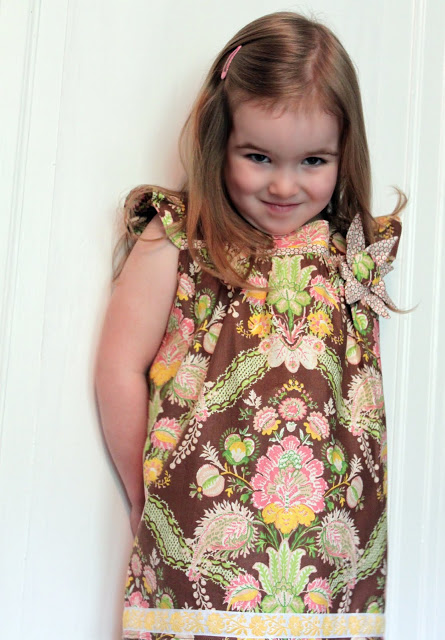


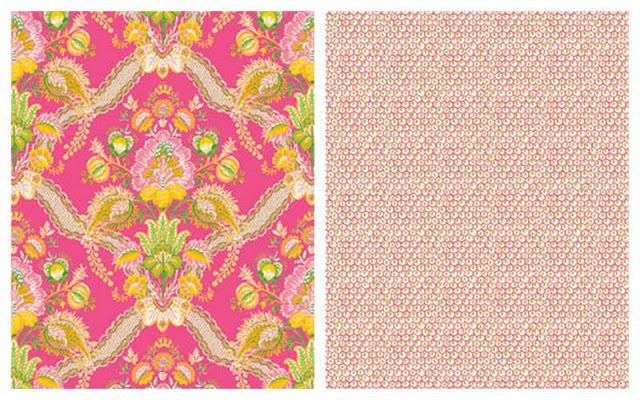
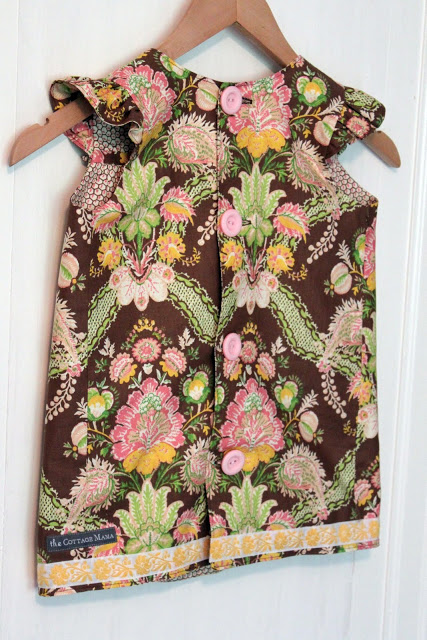
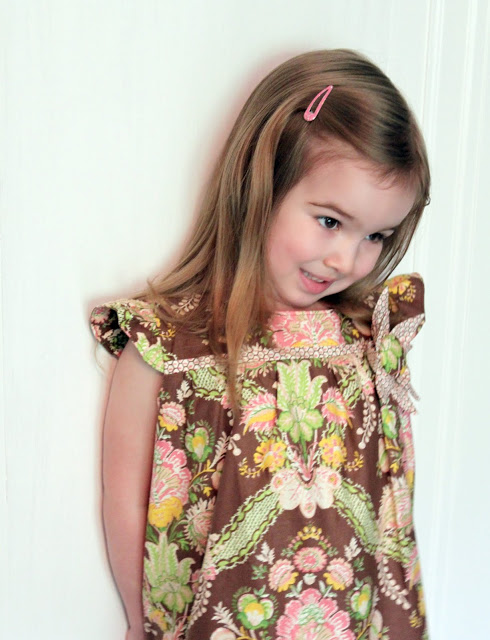





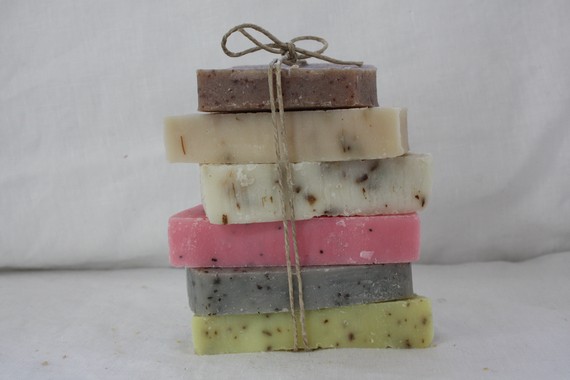
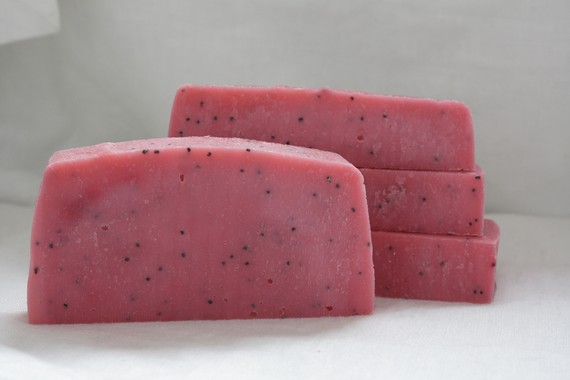

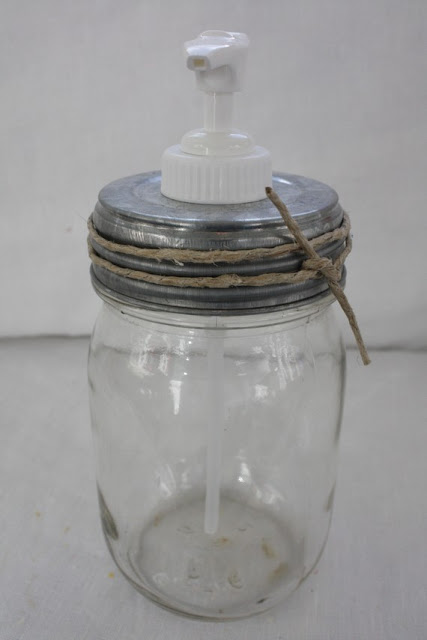

 Lindsay Wilkes is the owner and designer behind The Cottage Mama. She creates timeless, vintage inspired sewing patterns for children’s clothes. She is also a fabric designer for Riley Black Designers / Penny Rose Fabrics, author of the book ‘Sew Classic Clothes for Girls’ and can be seen teaching nationwide and online in her video series ‘Lessons with Lindsay’ sponsored by Baby Lock Sewing and Embroidery machines.
Lindsay Wilkes is the owner and designer behind The Cottage Mama. She creates timeless, vintage inspired sewing patterns for children’s clothes. She is also a fabric designer for Riley Black Designers / Penny Rose Fabrics, author of the book ‘Sew Classic Clothes for Girls’ and can be seen teaching nationwide and online in her video series ‘Lessons with Lindsay’ sponsored by Baby Lock Sewing and Embroidery machines.